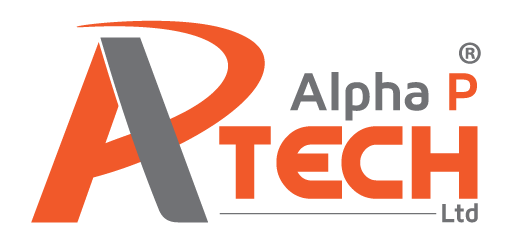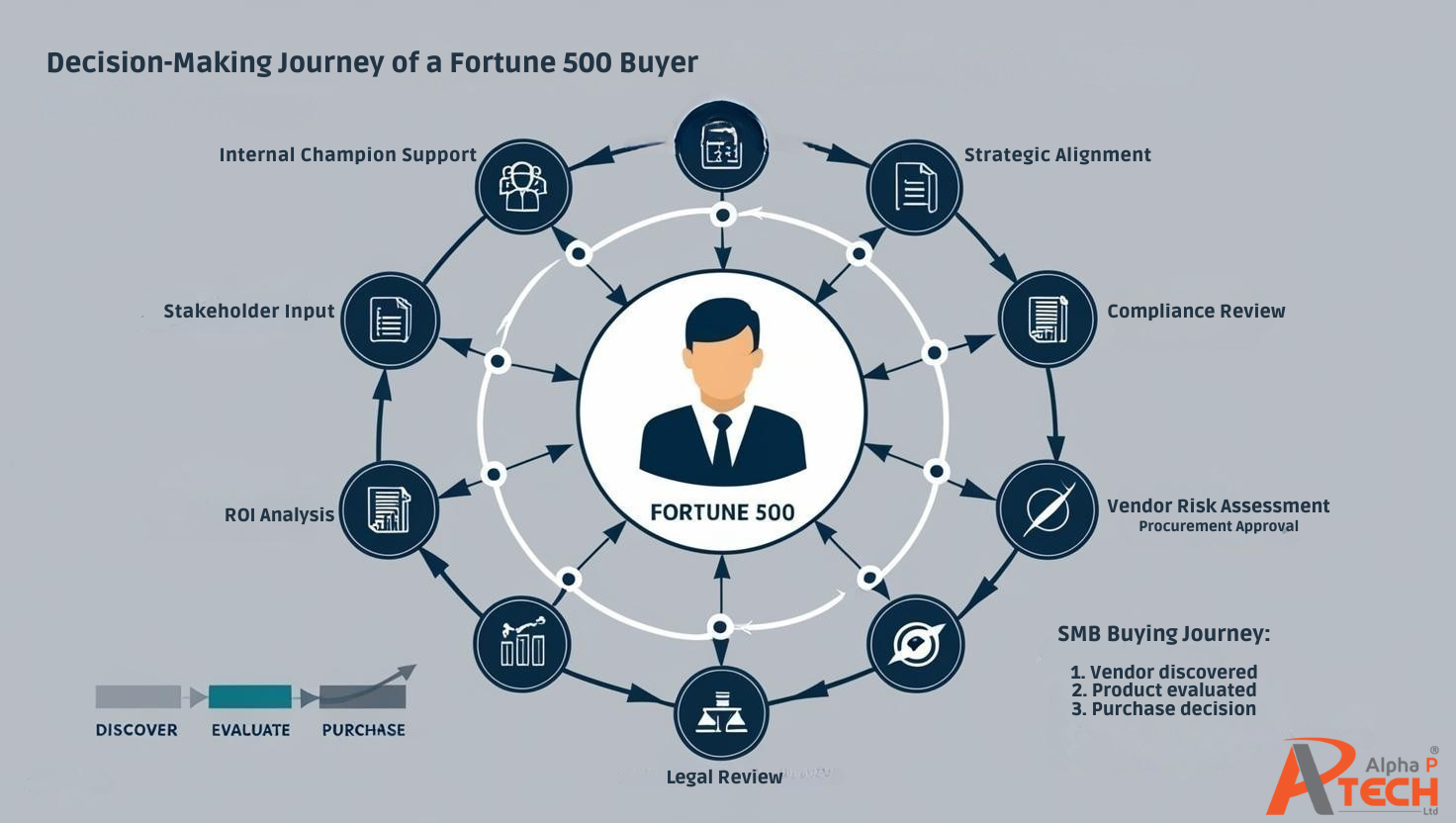Introduction: Why Fortune 500 Clients Require a Different Funnel Strategy
Selling to enterprise clients like Fortune 500 companies isn’t simply business as usual — it’s a different game entirely. With longer sales cycles, multiple decision-makers, and a higher bar for trust and credibility, winning deals at this level calls for a more strategic, considered approach. Standard funnels often fall short. Instead, an enterprise sales funnel must be purpose-built, taking into account the intricate buying behaviours and internal dynamics of large organisations.
To connect with high-profile prospects and keep them engaged, your B2B sales strategies need to be carefully adapted for clarity, consistency, and alignment across every touchpoint. And when it comes to true sales funnel optimisation, understanding the principles of enterprise marketing is key. In this guide, we’ll walk through practical, actionable ways to streamline your funnel — so you can simplify complexity, build stronger relationships, and convert top-tier clients with confidence.
Rethinking the Traditional Funnel for Enterprise Sales
When targeting enterprise clients, the traditional marketing-to-sales funnel often falls short. It’s typically built for speed and scale—aimed at capturing quick wins through volume-driven outreach. But the enterprise sales cycle operates on a completely different wavelength. Instead of one or two stakeholders, you’re often dealing with buying committees of five, ten, or more. Timelines are longer, the stakes are higher, and decisions are driven by strategy, not impulse.
In many cases, even after stakeholder buy-in, deals must pass through rigorous procurement and legal review cycles—often adding weeks or even months to the process. These steps aren’t roadblocks but essential stages in the enterprise buyer journey, and your sales funnel must be designed to accommodate them.
To succeed, your B2B sales strategy needs to prioritise customisation, education, and consistent value delivery over time. In other words, enterprise clients don’t want to be “sold to”—they want to be understood. This means creating a sales funnel for enterprise that supports long-term trust-building, multiple touchpoints, and role-specific messaging across departments.
Here’s a simple comparison to illustrate the shift:
- Traditional Funnel: Lead capture → Quick qualification → Sales pitch → Close
- Enterprise Funnel: Account identification → Stakeholder mapping → Educational engagement → Collaborative solutioning → Long-term conversion
By embracing these differences, you’re laying the groundwork for genuine sales funnel optimisation and long-term success in enterprise marketing.
Key Components of an Enterprise-Ready Sales Funnel
Building a sales funnel that’s fit for enterprise clients means shifting away from a volume-first mindset and focusing instead on precision, relevance, and long-term relationship-building. To achieve genuine sales funnel optimisation, every stage of the process needs to be tailored to the complexities of the enterprise environment. Here are three core components that underpin an enterprise-ready approach:
Account-Based Targeting (ABM)
Unlike traditional lead generation, account-based marketing (ABM) flips the funnel by focusing on high-value accounts first. Success starts with identifying and prioritising key organisations that are the right strategic fit. From there, messaging must be personalised for each stakeholder group—procurement, technical leads, C-suite, and so on. This is where tools like CRM segmentation, intent data, and predictive scoring come into play, enabling your team to anticipate buyer needs and deliver targeted, role-specific content. For more information on getting started with ABM, see our account-based marketing guide.
Relationship-Centric Lead Nurturing
With enterprise buyers, trust is everything. B2B lead nurturing should centre around providing consistent value over time—through thought leadership, case studies, and personalised outreach. Strategies like multi-threaded communication (engaging multiple contacts within the same account) and value-led follow-ups help reinforce your position as a strategic partner rather than just another vendor.
Solution Mapping & Consultation
In the enterprise space, one-size-fits-all solutions rarely succeed. Buyers want confidence that your product or service can solve their unique challenges. That’s where solution selling becomes essential—focusing on outcomes rather than features.
It also means identifying and equipping internal champions—those individuals within the business who believe in your solution and can advocate for it through internal discussions, procurement reviews, and leadership meetings.
Equip your sales team with tailored enterprise sales enablement content that supports in-depth consultations and aligns with the client’s internal decision-making processes.
Streamlining the Funnel: Tools and Techniques to Shorten the Sales Cycle
Enterprise deals are rarely won overnight—but with the right tools and processes, you can significantly reduce time-to-close without compromising the quality of engagement. The key lies in applying technology that supports smarter decision-making and keeps prospects moving steadily through the funnel. For effective sales funnel optimisation, your tech stack should include a robust CRM, marketing automation for B2B, and buyer intent platforms that signal when a prospect is showing signs of readiness.
Tools that improve pipeline visibility—such as real-time dashboards and advanced lead scoring—enable sales teams to focus their energy on high-potential accounts. This means less time wasted chasing lukewarm leads and more time deepening engagement where it counts.
Crucially, automation should be used to enhance, not replace, human interaction. Personal follow-ups, strategic outreach, and relationship-building still play a central role—especially when dealing with enterprise stakeholders.
Implementing lead scoring and email sequencing can significantly reduce sales cycles. For instance, TeamBuilding, a company that hosts team-building activities, implemented lead scoring to prioritise leads and automate their follow-up process. As a result, they more than tripled their monthly revenue.
By combining technology with thoughtful B2B sales strategies, businesses can streamline complex sales journeys, speed up decision timelines, and stay one step ahead in the world of enterprise marketing.
Sales-Marketing Alignment: The Silent Funnel Killer
One of the biggest threats to an effective enterprise sales funnel isn’t external—it’s internal. When sales and marketing teams operate in silos, the result is a disjointed buyer experience, missed opportunities, and stalled deals. For enterprise clients, where consistency and trust are paramount, a lack of sales-marketing alignment can quietly erode your funnel’s effectiveness.
To truly optimise performance, both teams must share ownership of the funnel—from awareness to close. That means aligning on KPIs, collaborating on messaging, and agreeing on what qualifies as a sales-ready lead. A unified approach ensures that enterprise prospects receive the right message at the right time, regardless of who’s delivering it.
Running regular funnel audits can help identify gaps and recalibrate efforts, keeping both sides accountable and outcome-focused. If you’re looking to improve collaboration and deliver stronger results, our guide on How to Align Your Sales and Marketing Teams for Better B2B Results offers practical steps you can implement right away.
With clear communication and joint strategy, enterprise marketing and sales can work in tandem to drive stronger conversions and true sales funnel optimisation.
How to Win the Trust of Fortune 500 Decision-Makers
Trust is the cornerstone of every high-value deal, and when you’re selling to large enterprises, it becomes even more critical. These organisations are risk-averse by nature—making buying decisions that can impact multiple departments, budgets, and timelines. To achieve high-ticket B2B conversion, your sales funnel must be built on a foundation of credibility and reassurance at every stage.
Establishing enterprise buyer trust starts with demonstrating proven results. This means showcasing industry-specific case studies that speak directly to the challenges your prospect is facing. Back this up with evidence of compliance, data security, and other enterprise-grade standards—non-negotiables for Fortune 500 clients. ROI projections and benchmarking data can further reassure stakeholders that your solution delivers measurable value.
But numbers alone aren’t enough. Strategic listening, collaborative discovery, and a consultative approach show decision-makers that you understand their world and are committed to co-creating the right solution. When integrated thoughtfully, these elements become powerful drivers of sales funnel optimisation and sustainable growth within enterprise marketing strategies.
Final Thoughts + Actionable Checklist
Optimising your sales funnel for Fortune 500 clients requires more than just refining your pitch—it’s about reshaping your entire approach. Enterprise sales funnels are inherently more consultative, targeted, and collaborative. Success depends on combining tailored B2B sales strategies with trusted relationships, intelligent tools, and a deep understanding of enterprise marketing dynamics.
Here’s a quick checklist to guide your next steps:
✅ Identify high-value accounts
✅ Customise outreach per stakeholder
✅ Align sales & marketing
✅ Use automation smartly
✅ Build multi-threaded trust
Getting this right can unlock stronger relationships, shorter sales cycles, and better conversion outcomes.
Want support tailoring your sales funnel for high-profile clients? Contact us for personalised sales content, strategy, and messaging that speaks to enterprise decision-makers—with clarity, credibility, and confidence.



